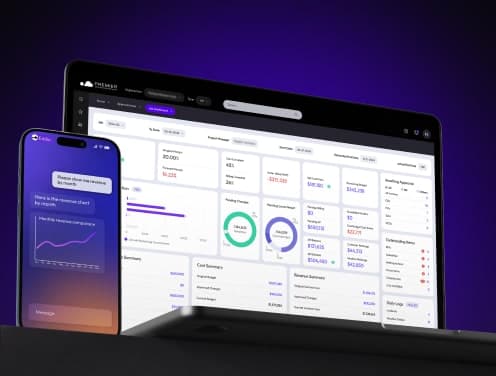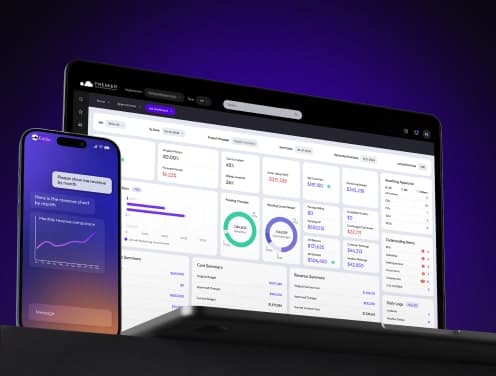
Construction Contracts: A Complete Guide For Your Company
Construction contracts are one of the first steps of a project, describing all prizes, steps, and prices accorded to the customer. It is essential to have a clear communication, which avoids misunderstandings over scope, delivery, and budget. With different projects and needs, each company can choose a type of construction agreement. As they have distinct advantages and disadvantages, it is important to learn more about them before choosing the best for your future projects. Premier Construction Software prepared the following guide to help you understand them!
What are construction contracts?
Construction contracts are legally binding agreements between parties involved in any construction project. These contracts outline the obligations, responsibilities, and rights of each party involved. The parties generally include the owner, contractor, subcontractors, construction managers, architects, and sometimes engineers.
The budget is described and distributed in operations, materials, equipment, and employees in order to maximize the profit. Even if the value is defined before the project starts, it can change due to over-budget or unpredictable modifications to the prices and schedule for various reasons, including accidents, climate, and readjustments with suppliers.
The construction contract or agreement puts every party on the same page and protects them legally. If one of the obligations of the agreement is not fulfilled, there are taxes and late fees that increase the value. If necessary, legal action can be taken.
Who needs to sign the contracts?
Construction contracts are agreed upon between the owner and the contractor. The company chosen has other separate agreements with architects, engineers, designers, suppliers, and subcontractors. It all must be organized in a project management software like Premier.
Types of construction contracts
Every building contract can be chosen based on the type of scope and specific tasks. Each one of them has pros and cons that need to be analyzed before the document is created and both parties sign it. Keep reading to know what is best for your company!
Cost-plus contracts
Cost-plus contracts are used for uncertain expenses, reimbursing the contractors for unforeseen costs. It uses a predetermined fee, suggested and defined by the owner. Labor, equipment, and material are direct costs covered, but indirect costs required to manage the project can also be paid, such as insurance and software.
The advantages are less risk of losing money, being paid when prices rise, the quality of the service, and a safe profit. On the other hand, the drawback is that the contract manager must keep track of all expenses to present them and limit some costs.

Unit price contracts
These construction contracts detail all prices per unit for labor, materials, and suppliers. As the owner pays separately, based on units, it is necessary to include the quantity required to complete the project. If it is not possible to give an exact number, an estimate is enough.
This type of agreement is good for projects with repetitive elements that can be bought in large quantities at reduced prices. The con is that not every task is that simple. Many projects are complex and require different types of materials with varying prices.
Time and materials contracts
T&M contracts reimburse the company for material costs and charge a rate for each hour of labor. It is used to control the budget and reduce the risk of exceeding material and labor costs. This helps the owner to be in advance even at the beginning of the project.
Another advantage is the additional items that provide flexibility, including markup charges and a base payment for the team members. The disadvantages are higher risks for owners (who can face exceeding costs) and detailed processes because it is necessary to track and submit working hours and material costs.
These contracts are known as fixed price because they establish fixed costs for materials and labor, similar to the last one. It is one of the most used in the industry due to its clear and defined scope of work, accurate estimate, and higher chances of a healthy profit margin.
Not every project is that simple to predict. One drawback of complex jobs is that they do not consider changes. As with other industries, construction faces different adjustments to the schedule due to climate change and unavailable materials.
Guaranteed maximum price contracts
A guaranteed maximum price (GMP) agreement defines a limit to all costs over the project. It is not reimbursed. Every price exceeded must be paid by the construction company, which impacts the profit.
On one hand, it is good for the owners to save money and maximize profit. On the other hand, the general contractor is responsible for avoiding over-budgeting or facing additional expenses. This is why the review of the expenses is very time-consuming and needs to be carefully done.
Integrated project delivery contracts
Different from the other ones, these contracts integrate the design firm, the builder, and the owner in a collaboration system to keep all deliveries in a single document. It intensifies teamwork in order to reduce errors and share risks. However, not every company prefers it because it can be difficult to secure finances.
Manage your contracts with Premier!
Now that you know the types of construction contracts, it is time to rely on Premier Construction Software. More than just creating the agreements, you can use it to send them to be signed, add change orders, and keep track of all expenses. Contact our sales team to book a demo and optimize your project!





















